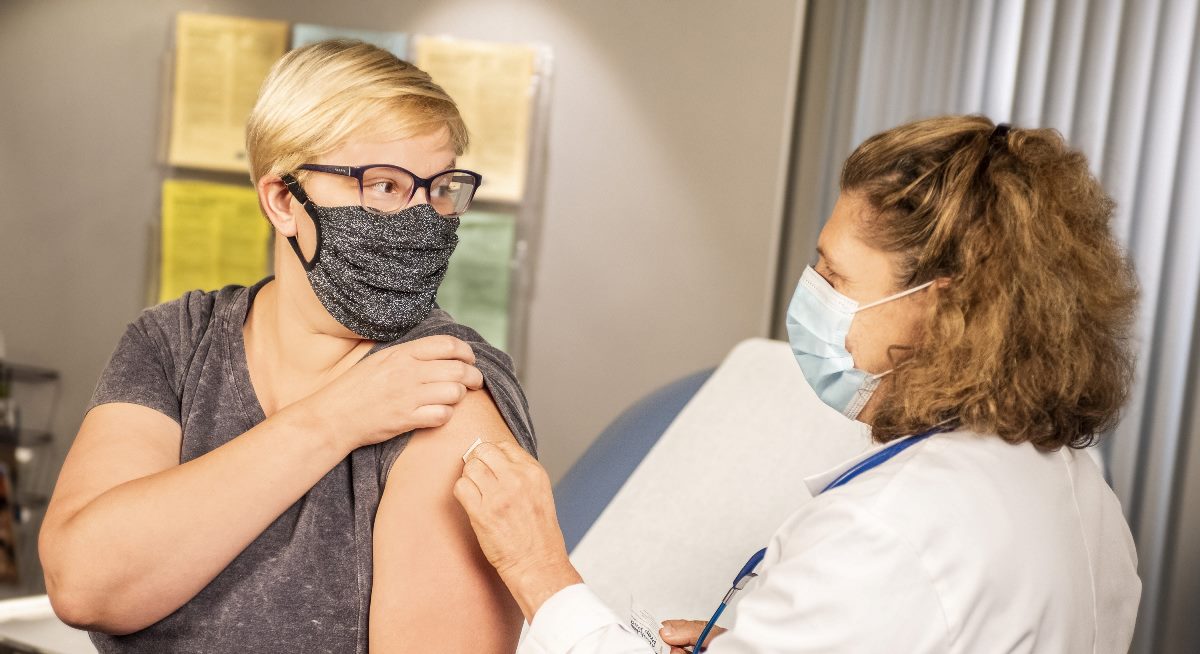Philanthropy’s Role in Indiana’s COVID-19 Vaccination Effort

Over the past year, IPA members adapted both their operations and grantmaking in reaction to the growing needs of communities most impacted by COVID-19. Social service organizations and local health departments have faced an influx of new and complex challenges. Early on, philanthropy reacted with new relief funds and an emphasis on disseminating information and dollars to support networks as quickly as possible.
While this work remains ongoing, a growing number now hope to accelerate recovery by supporting vaccination efforts. Sharing accurate information surrounding the disease, safety precautions, and the vaccine has become a key focus for some Indiana foundations. Using communication strategies to destigmatize the vaccine, removing barriers to access, and devoting additional funding to local health departments are essential aspects of these efforts.
Funding Local Level Vaccine Distribution
Ball Brothers Foundation (BBF) has remained steadfast in its efforts to support the community through the pandemic. To date, the foundation has awarded more than $600,000 in grants to support COVID-19 relief efforts.
Much of the vaccination process relies upon medical professionals and public health departments caring for the ill, monitoring the spread of cases, educating the public about prevention methods, running testing sites, and now managing the monumental task of carrying out the largest vaccination effort in the nation’s history.
Recognizing the immense pressures on the hospitals, public health departments, and healthcare organizations that carry the brunt of COVID-19 efforts, Ball Brothers Foundation (BBF) has implemented a multi-phase funding plan to support local vaccine distribution.
“The logistics of vaccine distribution are deeply complicated, and success will ultimately come down to the last mile—the process of actually getting shots out of vials and into people’s arms,” said Jud Fisher, president and chief operating officer of Ball Brothers Foundation. “As a locally-focused grantmaker, we are uniquely positioned to provide early support to help ensure our community is equipped to expediently, efficiently, and equitably distribute the vaccine.”
In its first phase, BBF provided $70,000 in funding from December 2020 to January 2021 to Open Door Health Services, Delaware County Health Department, Delaware County Office of Information/Delaware County Emergency Management Agency, IU Health Foundation/Ball Memorial Hospital Foundation, Meridian Health Services, and Ball State University. Funding covers costs such as staffing for the vaccine clinics, dissemination of public health information, clinic supplies, and much more.
BBF’s second phase of vaccine distribution funding—with grants anticipated to total up to $250,000—will further target vaccination efforts throughout Delaware County and East Central Indiana. All organizations that received funding in phase one have been invited to apply for additional funding in phase two this spring.
Since 1926, Ball Brothers Foundation has operated under the mission of “improving the quality of life in Muncie, Delaware County, East Central Indiana, and Indiana through philanthropy and leadership.” This means not only supporting efforts that set up the community for long-term success, but also reacting to current and urgent needs, Fisher said. Because of this philosophy, supporting COVID-19 needs and vaccination efforts during these trying times came naturally.
Leveraging Resources
Great things are seldom done alone. We can achieve the most impact when we work together. IPA members across Indiana have stepped up their community leadership efforts. We see these social impact funders partnering with businesses, nonprofits, United Ways, health departments, schools, elected officials, and others in new ways to better connect local communities.
One such partnership dedicated to recovery is the Elkhart County Community Organizations Active in Disaster (COAD). Over 30 organizations and individuals make up the consortium, including leadership by the Community Foundation of Elkhart County. Those involved work together to share and disseminate information to enhance disaster response efforts and mitigation.
To address its citizens' main concerns surrounding the vaccine, Elkhart County COAD has begun a massive awareness campaign. This campaign includes crafting personalized messages, in both English and Spanish, and leveraging key partners to distribute targeted information.
The group understood that trust can only be built through honest communication, and only implemented if the approach is compelling and personalized. COAD’s strategy identifies key subgroups of the community, as well as messaging systems to appeal to individual demographics most effectively. By defining prominent barriers to access for target groups and highlighting their motivations and trusted messengers, Elkhart County COAD has been able to develop a structured approach.
Destigmatizing Vaccinations
AWS Foundation supports disability communities in Northeast Indiana and partners with Indiana University to implement the Indiana Disability Resource FINDER to help families statewide navigate services. When COVID-19 struck, AWS Foundation—like many other IPA members—quickly responded with a streamlined emergency grant process to get funds to those in need within days of receiving their request. They also acquired much-needed face masks and hand sanitizer for direct caregivers working to keep the most vulnerable populations safe.
With the release of a vaccine, AWS Foundation has now begun efforts to reach into its community and advocate for the vaccine. While emergency funding remains an essential aspect of providing relief to its community, it has become nearly equally important to support local organizations and recuperate the suffering economy. By advocating for the vaccine and for safety measures such as wearing a mask, AWS Foundation hopes to help reduce the number of communities reliant upon emergency funding.
Patti Hays, the CEO of AWS Foundation, remarked on the significance of social media in the information campaign surrounding the vaccine. As community members share their experience receiving the vaccine through social media and word of mouth, the vaccine will become destigmatized. This anecdotal evidence from trusted community members will greatly assist local nonprofit organizations' social outreach programs.
